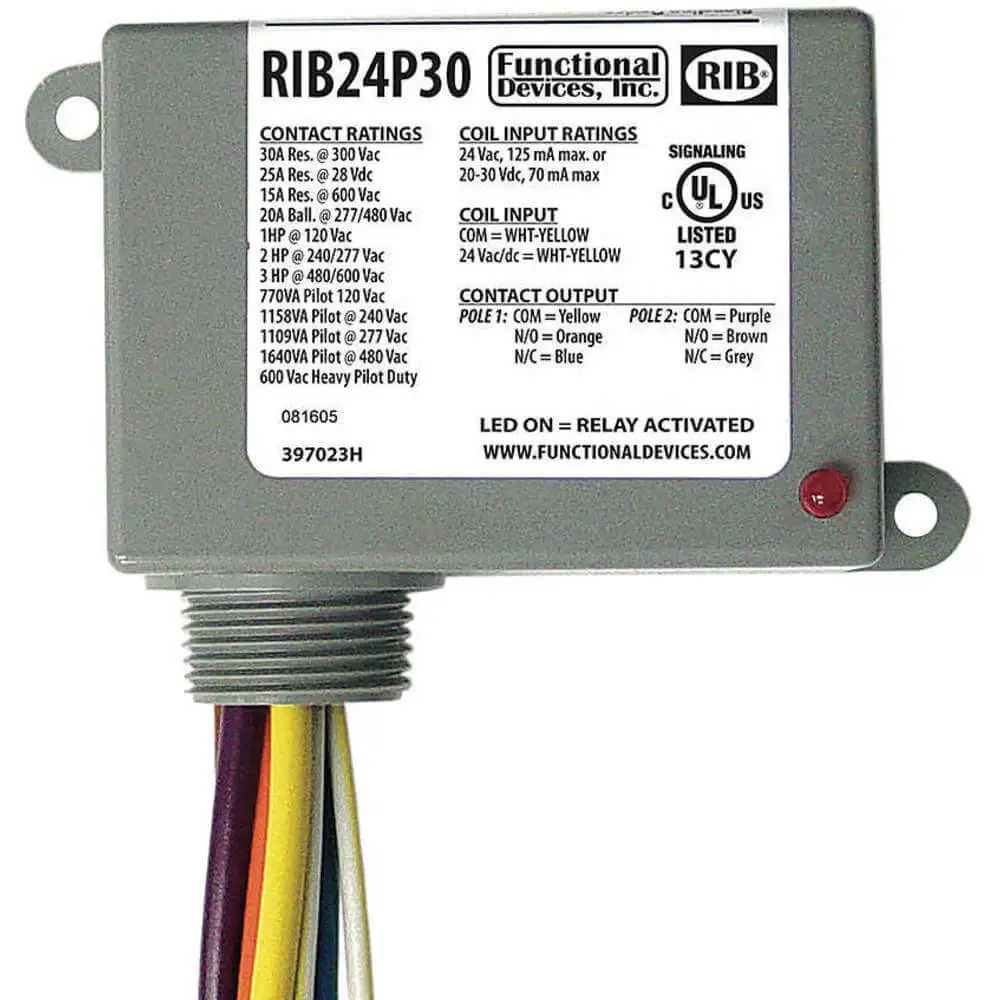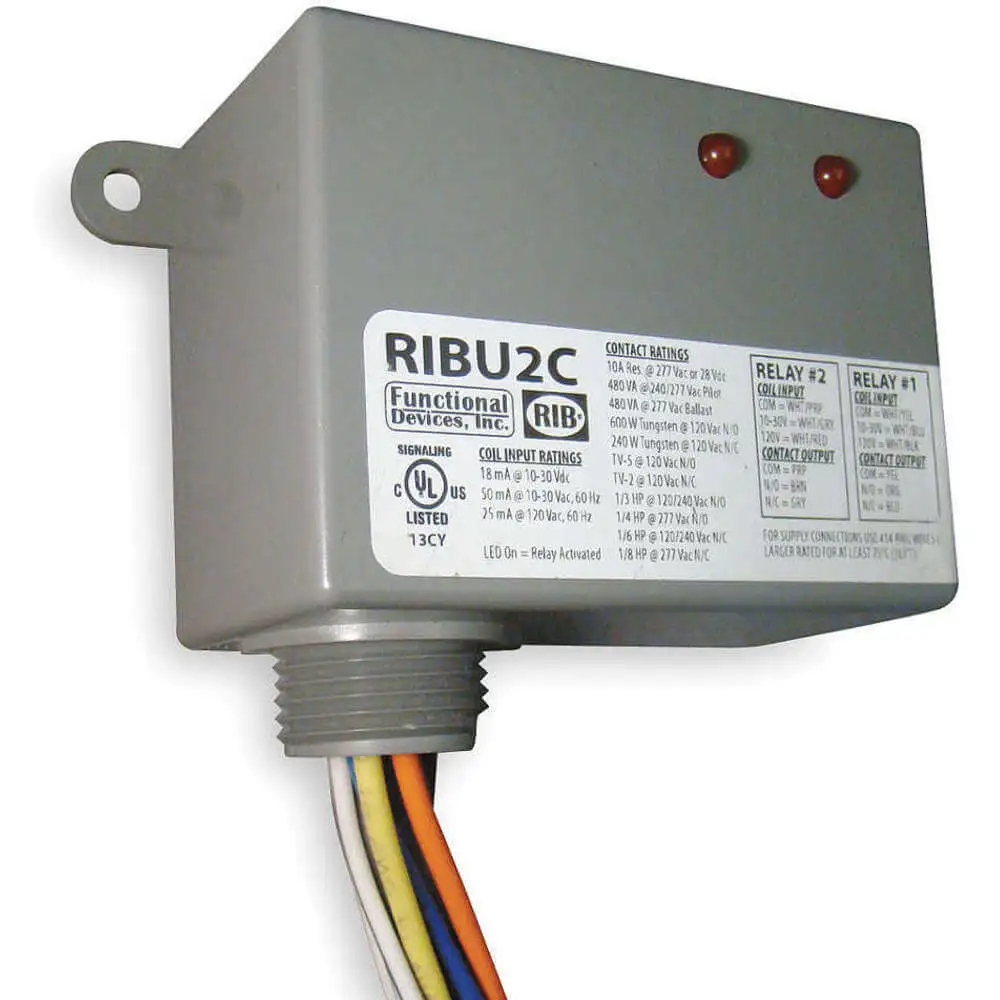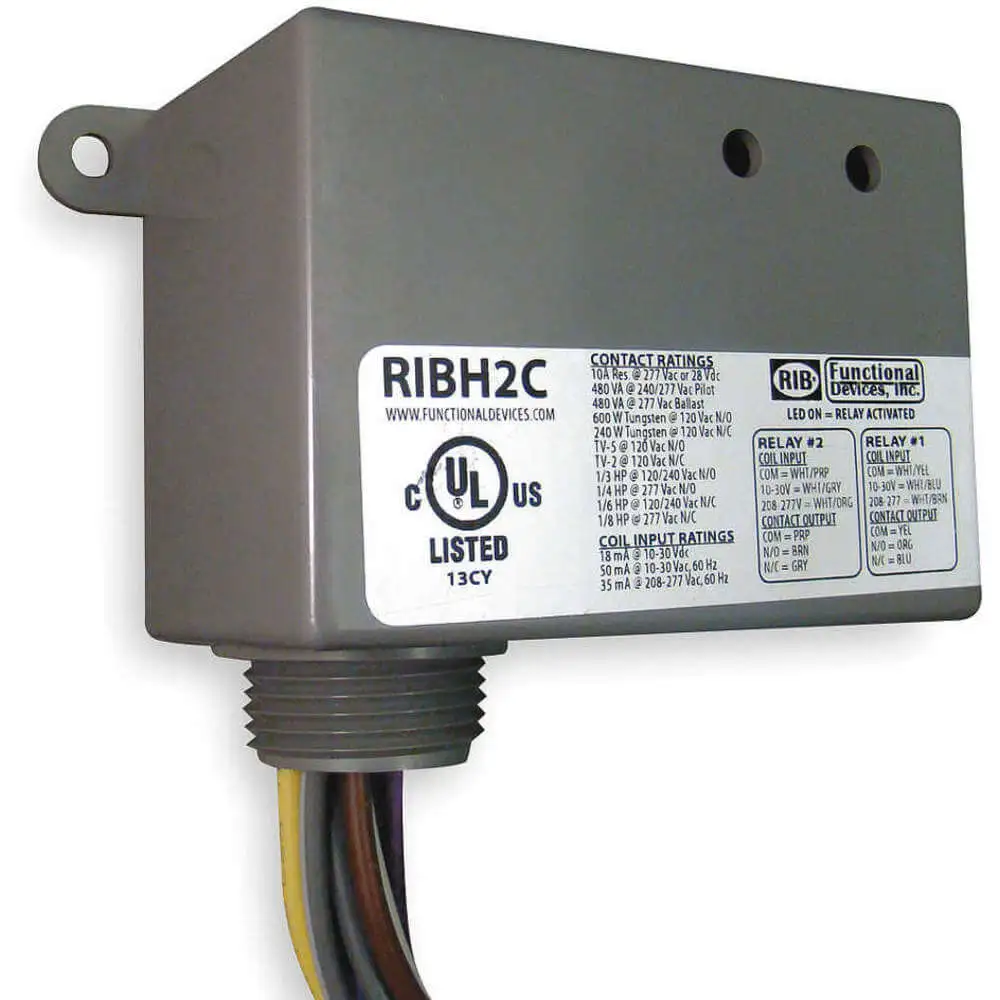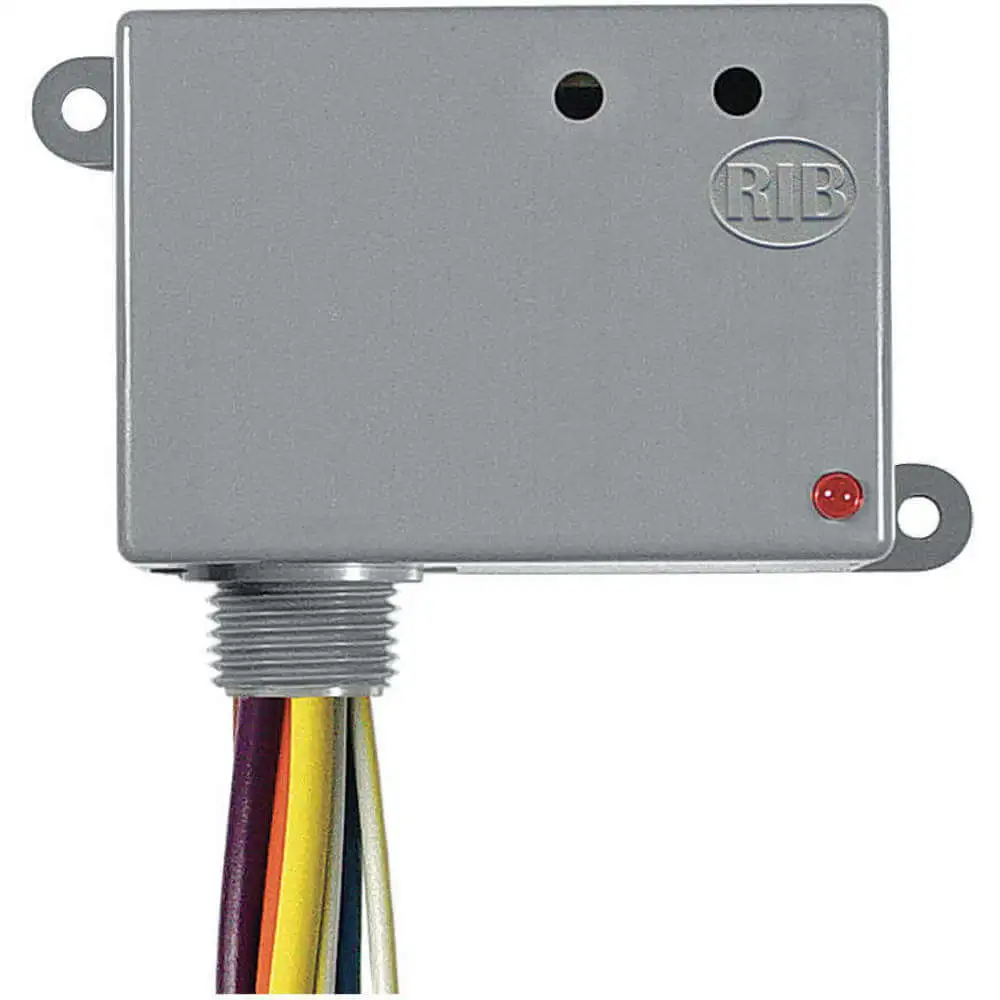Functional Devices RIB24P30 enclosed power relay controls and manages the flow of electricity. This relay is ideal for controlling exhaust fans, motors, vacuums and various electrical loads. It safeguards equipment from damage, enhances automation processes and manages power distribution in a controlled manner.
Features:
- This relay has an enclosed sealing design for safeguarding internal components against environmental factors.
- It offers surface mounting, a convenient & accessible solution for controlling electrical loads in diverse applications.
- This relay features a wire lead electrical connection to ensure seamless and user-friendly integration into electrical systems.
- It features a NEMA enclosure for basic protection against environmental elements.
- This relay has a double-pole, single-throw normally open (DPST-NO) contact form to provide dependable circuit isolation.
Frequently Asked Questions:
Q. What are the factors to consider while choosing this Functional Devices enclosed power relay?
A.
- Load requirements
- Contact form
- Mounting style
- Electrical connection type
- Coil voltage
- Contact ratings
- Horsepower ratings
- Response time
- Status indicator
- Mechanical operating durability
- Environmental conditions
- Enclosure rating and sealing
Q. Does this RIB24P30 relay have a status indicator?
A. Yes, the relay is equipped with an LED indicator for visual status monitoring.
Q. How do I maintain this Functional Devices RIB24P30 enclosed power relay?
A.
- Periodically visually inspect the relay for physical damage, loose connections and signs of overheating.
- Keep the relay and its surroundings free from dust and debris, especially in industrial environments.
- Regularly check and tighten all electrical connections to ensure secure and reliable contacts.
- Keep a watchful eye on the relay's operational behaviour, noting any unusual noises, delays or fluctuations in switching.
- Ensure the relay operates within specified environmental conditions, avoiding exposure to extreme temperatures or moisture if not rated for such conditions.
- Regularly monitor status indicators, such as LED lights, to ensure they function correctly.
- Periodically test the relay's functionality to ensure it responds as expected to control signals and effectively switches the load.
 Change Country
Change Country



